$5/Day
How to Effectively Engage Your Stakeholders Without Breaking the Bank on Social Media
 By Ebony Hall, MarCom Director, Navigate Affordable Housing Partners
By Ebony Hall, MarCom Director, Navigate Affordable Housing Partners
Executive Summary
A 2022 survey found that 55% of people who engage with non-profits on social media end up taking some action. As a result, free tools such as Canva have never been more critical to ensure that a non-profit’s digital communications strategy is robust, engaging, and adaptable, with the flexibility needed to relay its mission better and convey messages to promote change.
This paper discusses research that shows the importance of these principles, the results Navigate Affordable Housing Partners has garnered by following them, and how spending $5 a day can increase overall followers and engagement. Fortunately, marketers for other budget-deprived non-profits can do the same if teams better identify relevant content and prioritize engagement, goal-setting, and reporting.
About Navigate
Originally incorporated in 1980 as a legal instrumentality of the Jefferson County Housing Authority, Navigate Affordable Housing Partners aims to be an instrument of change across the housing industry by revitalizing communities, empowering people, and strengthening the sector. Navigate’s work as a performance-based contract administrator for the U.S. Department of Housing and Urban Development (HUD) has required communication with owners, agents, and affordable housing property managers and residents. Landlords need guidance on governmental compliance, while residents need information on their rights and responsibilities as tenants.
Navigate added a marketing department in 2016 with a plan to inform, educate and showcase its work in the housing industry. Knowing it had to communicate more effectively with key stakeholders and target audiences in government contracting, asset management, and community revitalization, Navigate developed and deployed a multifaceted social strategy.
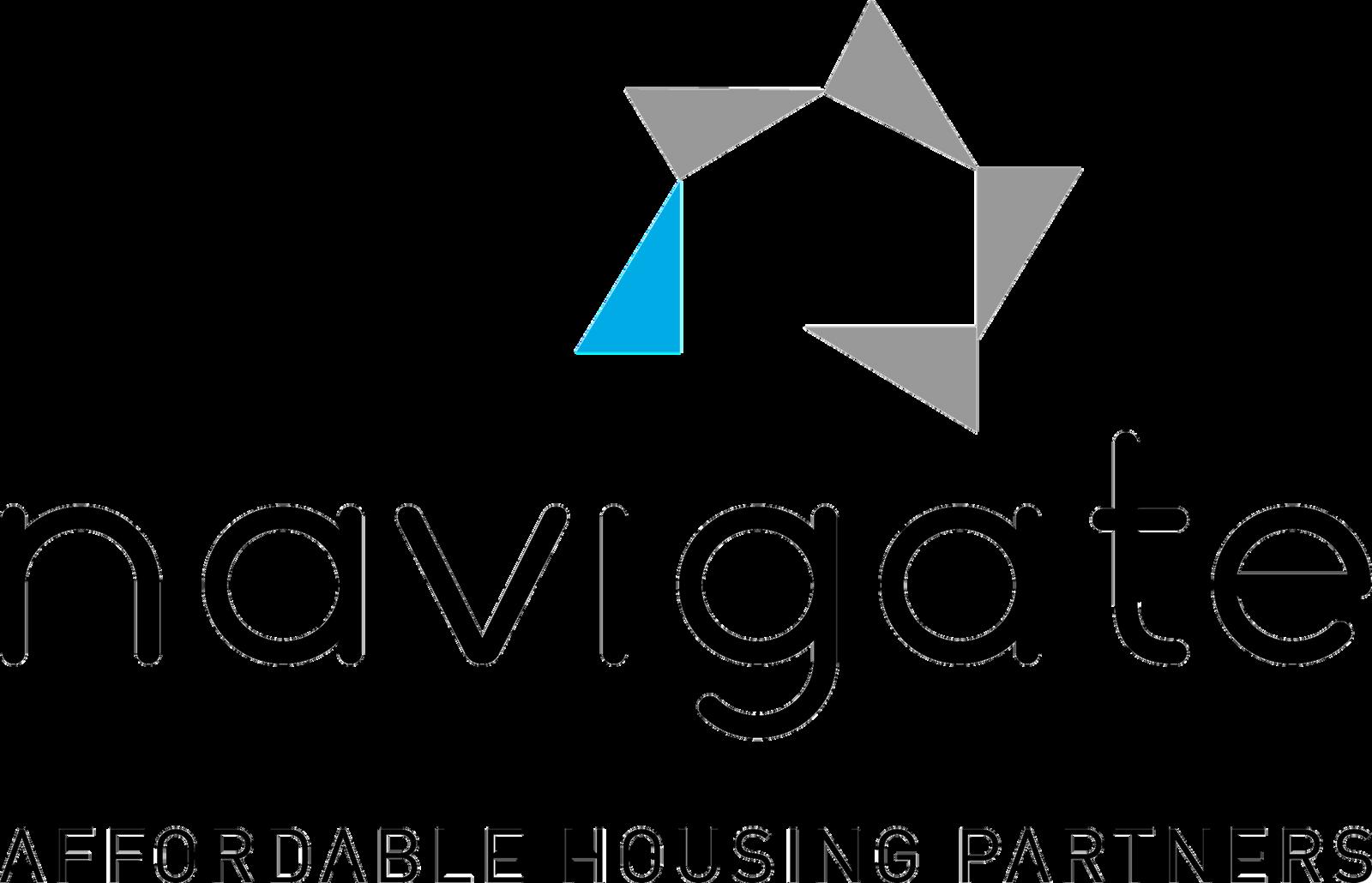
W H I T E P A P E R
THE CHALLENGE
Even before the COVID-19 pandemic, nonprofits faced tight marketing budgets. Today, those resource restrictions are even more significant. According to advisory firm Forvis, 58 percent of non-profits experienced a budget shortfall in 2021. In addition, of the 878 respondents, 57.7 percent cited “lack of awareness/communication” as one of their biggest challenges. Meanwhile, 36 percent of non-profits report that funders and donors now request more information about past performance. Another “53 percent of public charities say donors requested more information about board and staff demographics in the past year.”

The question, then, is how do non-profits prioritize reaching their stakeholders and satisfying their need for information with less funding?


THE SOLUTION
Digital Video

Digital platforms offer solutions to reach various stakeholders without breaking the bank. According to Datareportal, 82 percent of North Americans actively used social media in February 2022. The data also show that 307 million internet users spend about 2.25 hours on social media daily. In addition, nearly 86 percent of North American social media users watch “any kind of video” weekly. Close to 28 percent “discover new brands, products, and services through digital marketing.” With the right story, nonprofits can use owned media to tap into the emotions that move donors to give.
Video Storytelling

Storytelling “enables marketers to develop a deeper connection with the audience.” It “is the secret to nonprofit marketing. It helps you to maintain and gain more supporters, volunteers, grants, donations, and media attention.” However, digital storytelling “is an umbrella term for immersive, interactive content” that includes “scroll-based animation, rich media, and parallax scrolling to earn and keep” the reader’s attention. Our focus here is rich media in the form of video.
The power of videos is unmatched. They “enhance the public’s impression of the organization’s products or services, put a human face on the organization, and ultimately build the brand. The three V’s of communication—verbal, vocal, and visual—are brought together in the video form so that an audience is impacted on multiple communication fronts” while leaving “a strong mental impression” on the viewer.
One example of this is an ASPCA commercial. Images of suffering animals play on the screen while Sarah McLachlan’s “Angel” plays in the background. The ad raised $30 million in its first two years. It’s the pathos, according to Maria DiMedio, that creates sadness and even pity in the viewer. Jon Mowat says, “Emotional drivers are the key to unlocking behavior change, and if we have the goal of long-term brand growth, we should be connecting emotionally with viewers (Mowat, 2018).”

That’s not to say that every video you produce should trigger sadness or negative emotions, as lasting impressions can obviously be positive and still tug at the heartstrings. There are several ways to do this visually, including the examples below:
Create stories about programs and events that display your mission in action.
Ask your staff how they feel about your nonprofit’s work.
Ask your volunteers what makes them show up time and time again.
Ask a client how your nonprofit’s work has changed their life. Explain how one donation makes a difference.
Capturing these stories on video and sharing them on social media has many benefits. It can reach people previously unaware of your services, prompt both new and current donors to give, and attract more volunteers.
The Cost of Video
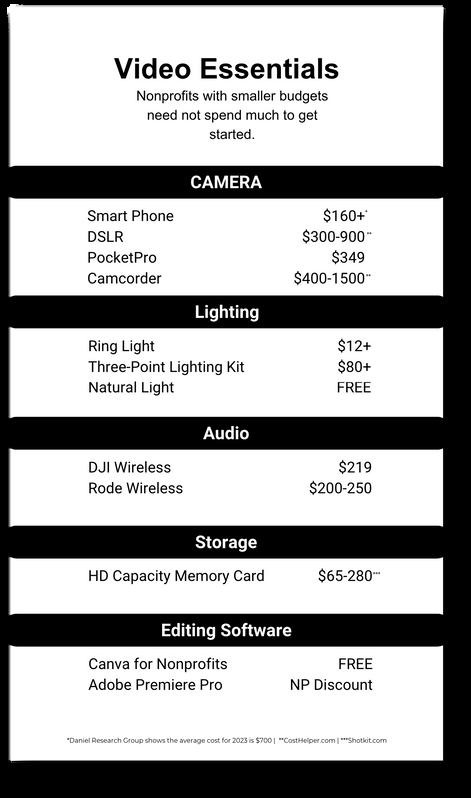
While this owned media is “free,” video storytelling requires an initial investment of money and an ongoing investment of time to create the content. Nonprofits with smaller budgets need not spend much to get started. The advanced technology of smartphone cameras makes high-quality video accessible to everyone. Navigate recently started using the DJI Pocket 2 Pro – a compact 4k camera priced at $499. With built-in stabilization, there’s no need for a tripod. The Pocket Pro has a built-in microphone; however, you can add an external wireless microphone via the Do-It-All Handle for better sound quality. The camera requires a mini-SD card for storage.
While this owned media is “free,” video storytelling requires an initial investment of money and an ongoing investment of time to create the content. Nonprofits with smaller budgets need not spend much to get started. The advanced technology of smartphone cameras makes high-quality video accessible to everyone. Navigate recently started using
While this owned media is “free,” video storytelling requires an initial investment of money and an ongoing investment of time to create the content. Nonprofits with smaller budgets
need not spend much to get started. The advanced technology of smartphone cameras makes high-quality video accessible to everyone. Navigate recently started using the DJI Pocket 2 Pro – a compact 4k camera priced at $499. With built-in stabilization, there’s no need for a tripod. The Pocket Pro has a built-in microphone; however, you can add an external wireless microphone via the Do-It-All Handle for better sound quality. The camera requires a mini-SD card for storage.
Navigate also uses a three-point lighting kit and shoots most videos in-office; however, natural lighting via the sun is always free.
Various smartphone apps allow users to edit videos, but online graphic design tools like Canva enable free access to create everything from social media posts to videos. Organizations can upgrade to Canva Pro for $120/year for one person or $150/year for up to five people; however, qualified nonprofits can register to get Canva’s premium features for free.
Owned, Earned, & Paid Media

Owned media is powerful; however, a well-done story can translate into earned media. It can drive shares & mentions and garner the attention of local media and private/public partners. Adding paid media – such as by boosting social media posts - to this mix will increase the chances of being seen by a new audience. Wordstream found that Facebook's average cost per click (CPC) is $1.72 “across all industries.” Your reach can grow for as little as $5/day over seven days, reaching users who may not have seen your content otherwise.
Navigate often pairs video storytelling with minimal ad spending to reach various audiences and impact reach. For example, the following two posts were boosted for $35 over seven days. We used Canva to create each video.
This post about the new Violence Against Women Act website targeted a custom audience of people who like our page and “people similar to them.” The ad reached 957 accounts at the cost of 31 cents per click. Our engagement was even higher thanks to eight people sharing the post.
A second video post about new funding for lead removal reached more than 6000 Facebook users across the United States. Garnering only one click and one comment, 61 percent of those users either watched the video to completion or for at least 15 seconds. Our cost per ThruPlay was three cents.
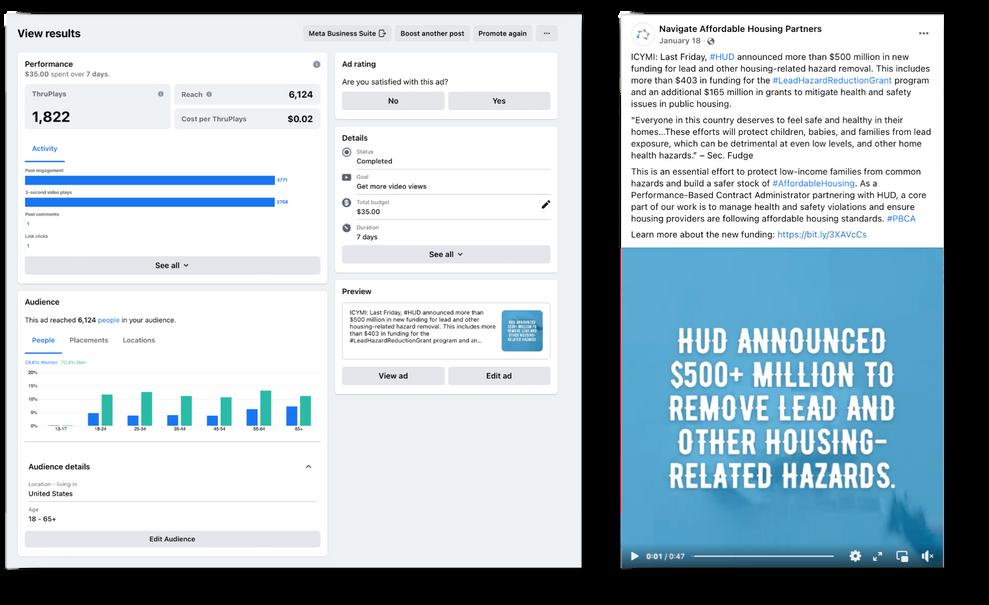
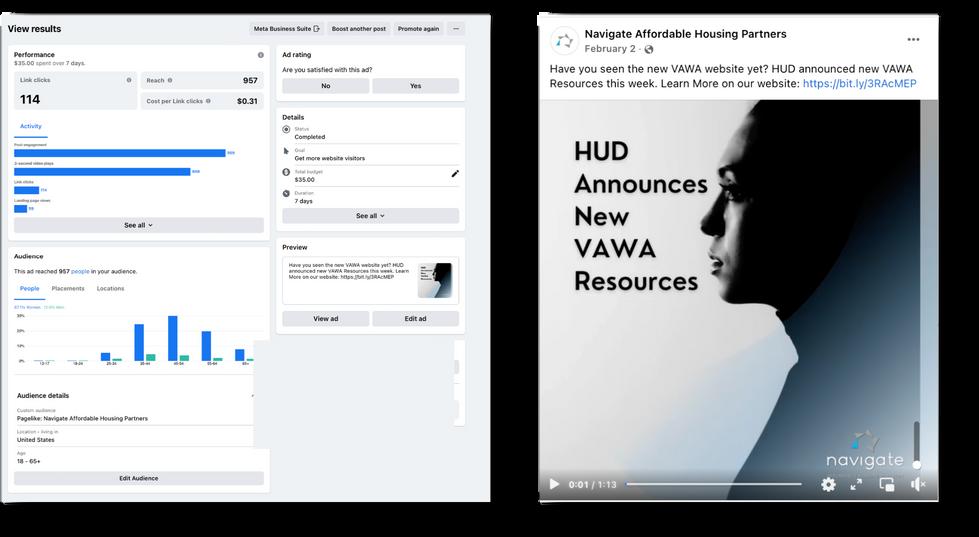
PLANNING YOUR CONTENT
Strategic planning is a staple of digital marketing; however, smaller non-profits may only have one person managing social media platforms. This marketer most likely wears many hats and posts to social media when they can find the time or even as an afterthought.
Is this you?
A content calendar can help you pre-plan digital content. Researchers have concluded that “a social media calendar to manage the ongoing communications should be a basic component of any firm’s social strategy.” In addition, the content in this calendar should align with your nonprofit’s brand identity, “ensuring that the engagement tactics employed on social media platforms reflect the firm’s overarching organizational and communication goals.”
Navigate’s marketing department uses a content calendar and a social media dashboard. We have modified the Google Sheets Geeks’ “Social Media Editorial Calendar” for our purposes and use it in tandem with the social media dashboard Sendible.

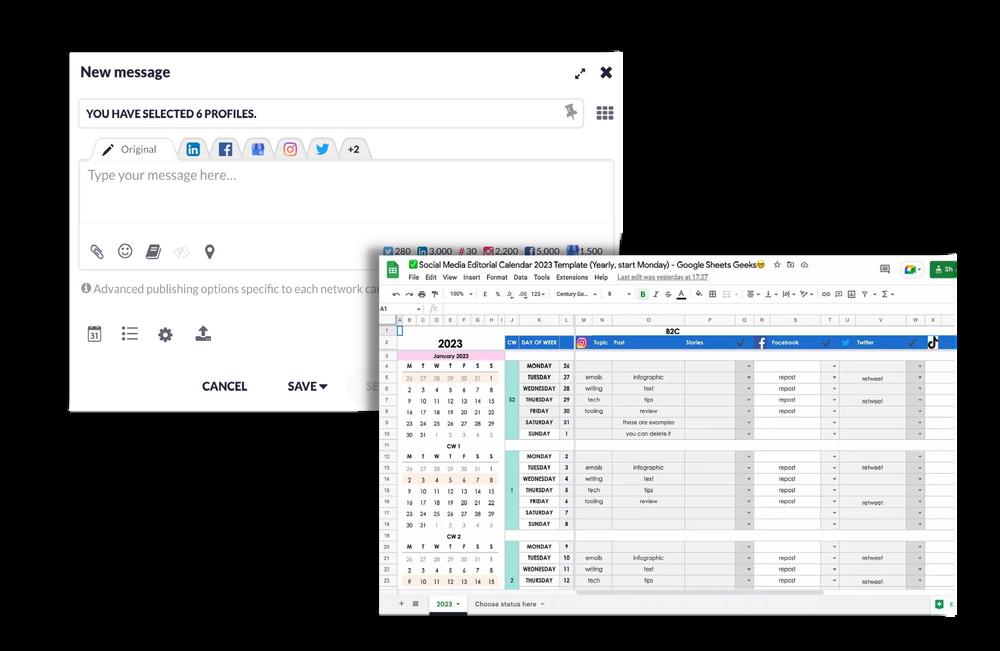

Dashboards “are a critical tool for insight and direction of successful social media campaigns (Murdough, 2009)." Not only do they allow the nonprofit to schedule content on major digital platforms simultaneously, but they also allow it to monitor each post’s performance. Zulfiqar et al. refer to these as “Social Media Analytics (SMA) tools” that “not just analyze data, but also advise necessary actions based on the firm's past data.” The researchers conclude that for any firm to use Social Media Marketing (SMM) “effectively to its maximum potential, it is a must to incorporate SMM Metrics into its SMMS (Social Media Marketing Strategy) and use SMA to analyze these Metrics.”
The Cost of Planning
Dashboards on the market today range in price. For example, while a one-user account with Sendible is $29/month, we chose a four-user version and received a non-profit discount of 30 percent.

Whichever dashboard you choose, always inquire about a nonprofit discount.
Is this you?
A content calendar can help you pre-plan digital content. Researchers have concluded that “a social media calendar to manage the ongoing communications should be a basic component of any firm’s social strategy.” In addition, the content in this calendar should align with your nonprofit’s brand identity, “ensuring that the engagement tactics employed on social media platforms reflect the firm’s overarching organizational and communication goals.”
Benefits for your Nonprofit
Nonprofits typically measure the return on investment (ROI) in terms of their services' impact or benefits in the community. They also look at how much money is raised

NAVIGATE'S SUCCESS STORY
Navigate does not fundraise, so we measure ROI differently. Since its inception in 2016, Navigate’s marketing department has soared to new heights in communicating with its audiences. In 2018, we added community revitalization and charitable donations to our wheelhouse. While our mission remained the same, our communications needed to expand to new audiences. Social media and minimal ad spending have helped us do that.
Navigate has focused its community revitalization efforts on Birmingham’s historic North Titusville neighborhood. Transparency is the keystone of our relationship with the people living there. The historically black neighborhood has seen the population decline for decades. The residents also fear gentrification and question outside efforts to bring “affordable housing” to the area. We know the importance of “showing our work” and clarifying our intentions.
In 2022, Navigate purchased 12 cottages in the heart of Titusville. While the units appeared to be livable from the exterior, the inside of these homes revealed unsafe conditions. True to our mission, we worked to rehabilitate and preserve these homes. The marketing team documented the transformation and released a short video case study. We boosted this Canva-created video for $35 over seven days, reaching 3,911 people. Our CPC was 15 cents with 241 clicks and 118 landing page views on the NavigateHousing.com website.
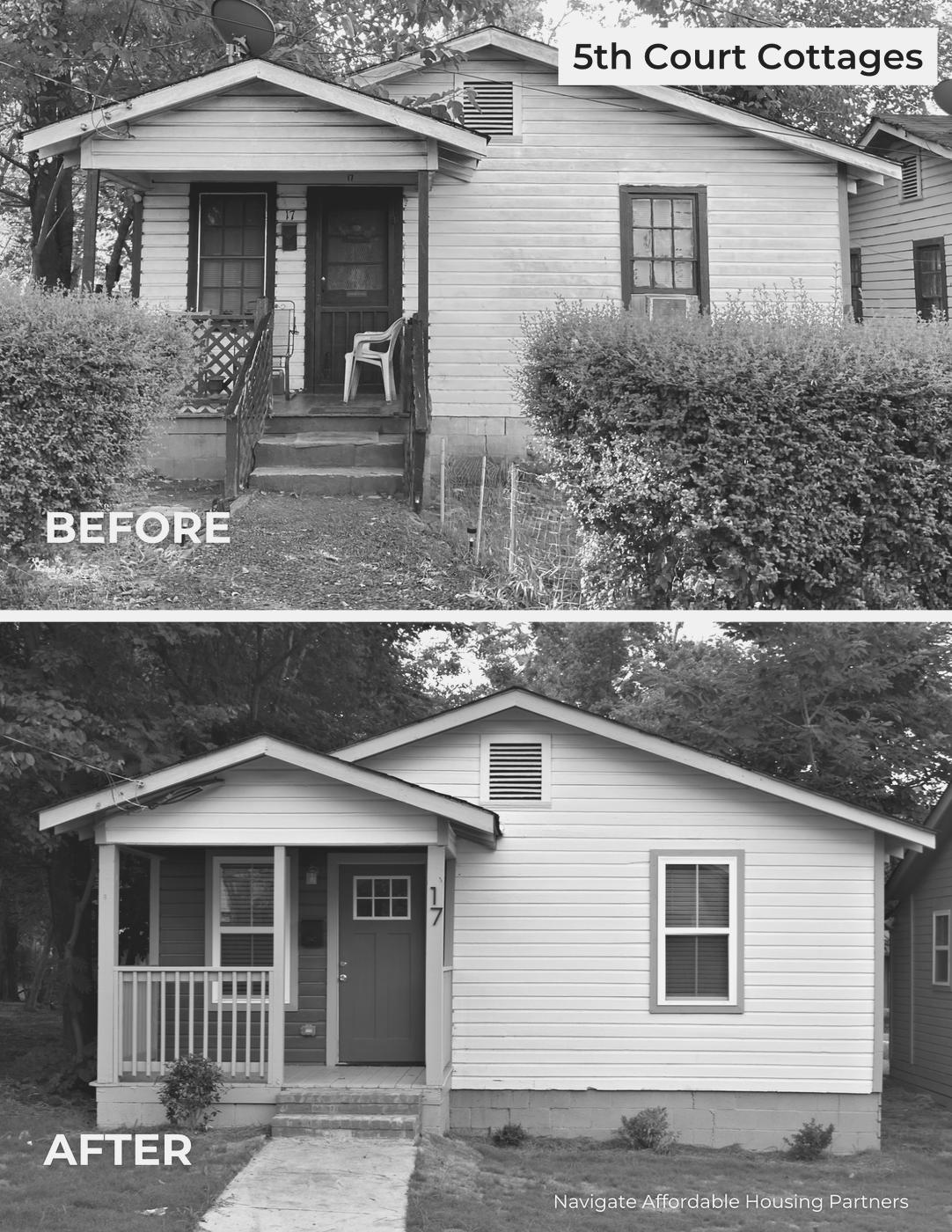 ProductManager ProjectManager
ProductManager ProjectManager
More importantly, it excited the people in our targeted area about the changes, and our earned media continues to increase.
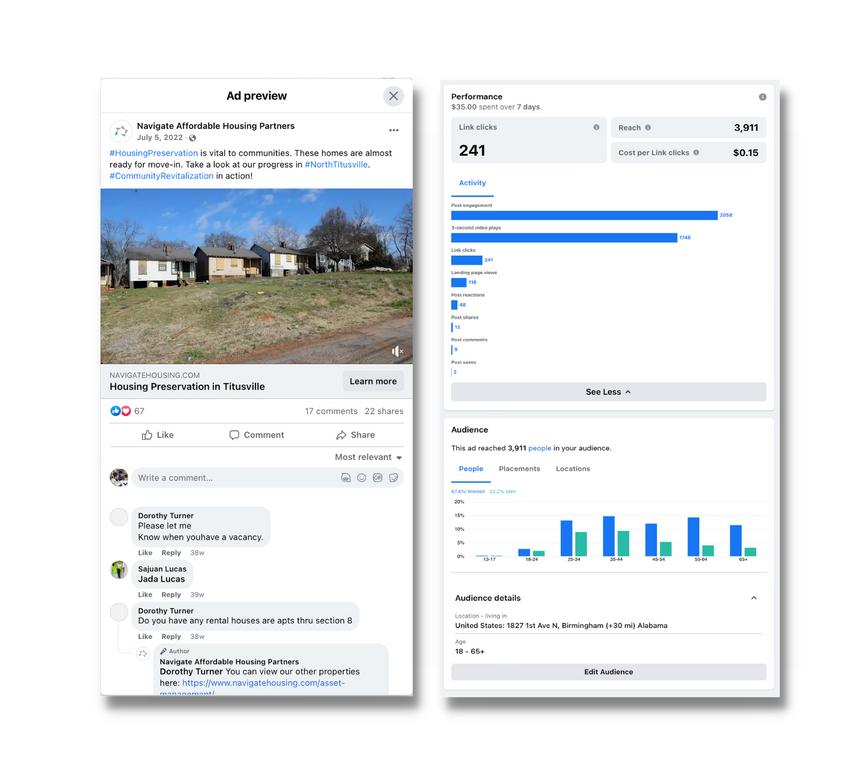
By documenting similar projects and telling those stories, we have maintained our relationship with the community and informed the surrounding area about the availability of affordable housing and the resurgence of a once-vibrant neighborhood. In addition, prioritizing video storytelling has allowed us to raise brand awareness, increase our

MY CHALLENGE TO YOU
I encourage you to make the case to your board about the minimal investments necessary to take your nonprofit’s digital marketing to the next level. Moving from owned media to earned media can take time. As a former news anchor and reporter, I know local journalists scour social media daily, looking for their next story. By increasing your social media presence and getting more eyes on your content, you tell your story and raise your organization’s credibility in that particular space. Your organization can potentially earn the media coverage your board has only dreamed about, opening the door to more donations and volunteers. Your CEO could be the next go-to subject-matter expert in your area.

But even without your board or any new equipment, I challenge you to do what you can to start today. Grab a smartphone. Make a video. Tell a story. Then post it.

Conclusion
Video storytelling for non-profits is incredibly powerful. With most Americans actively using social media, organizations have an important opportunity to connect with their audiences through compelling and emotive video content. While video storytelling requires an initial investment of money and an ongoing investment of time, non-profits with smaller budgets can take advantage of the advanced technology of smartphone cameras and online graphic design tools like Canva to create high-quality content. With the right approach and strategy, non-profits can use owned, earned, and paid media to expand their reach, engage with audiences, and raise awareness about their mission. By prioritizing video storytelling, marketers for smaller non-profits can connect with their existing audience, encourage more donations, and reach new donors and volunteers. It can all begin with just one video and $5.
Sources
Streissguth, A (2023, March 9) Social Media for nonprofits: A comprehensive guide Constant Contact https://www constantcontact com/blog/social-media-fornonprofits/#: :text=If%20you’re%20wondering%20if,59%25%20of%20those%20donate%20money
“State of the Nonprofit Sector Report - 2022 ” FORVIS, BKD CPAs & Advisors, 2022, https://www forvis com/media/state-nonprofit-sector-report-2022
“2022 Nonprofit Standards Benchmarking Survey ” BDO USA, 2022, https://www bdo com/insights/industries/nonprofit/nonprofitstandards
“Nonprofits Evolve amid Economic Uncertainty: BDO Nonprofit Standards Survey 2022 ” Business Wire, 27 Oct 2022, https://www businesswire com/news/home/20221027005775/en/Nonprofits-Evolve-AmidEconomic-Uncertainty-BDO-Nonprofit-Standards-Survey-2022
Kemp, Simon “Digital 2022: The United States of America - DataReportal – Global Digital Insights ” DataReportal, DataReportal – Global Digital Insights, 14 Mar 2022, https://datareportal com/reports/digital-2022-united-states-of-america?rq=united+states
Kemp, Simon “Digital 2022: The United States of America - DataReportal – Global Digital Insights” (see footnote 5)
“How to Harness Emotion as You Get Ready for Giving Season ” Network for Good, 20 May 2021, https://www networkforgood com/resource/harness-emotion-get-ready-giving-season/ Whitler, Kimberly A. “3 Reasons Why Storytelling Should Be a Priority for Marketers.” Forbes, Forbes Magazine, 12 Oct. 2022, https://www.forbes.com/sites/kimberlywhitler/2018/07/14/3-reasons-whystorytelling-should-be-a-priority-for-marketers/?sh=55927a7f675
Wentley, Suzanne. “Nonprofit Storytelling: Why It Matters and How to Do It Effectively.” Constant Contact, 6 Oct 2022, https://www constantcontact com/blog/nonprofit-storytelling/
M , Christine “An Introduction to Nonprofit Storytelling ” An Introduction to Nonprofit Storytelling | 2022, https://shorthand com/the-craft/visual-storytelling-for-nonprofit-organisations/index html
Waters, Richard & Jones, Paul (2011) Using Video to Build an Organization's Identity and Brand: A Content Analysis of Nonprofit Organizations' YouTube Videos Journal of Nonprofit & Public Sector Marketing 23 248-268 10 1080/10495142 2011 594779
Lefave, Samantha “Sarah McLachlan Reveals the Truth about Those SAD ASPCA ADS ” Redbook, Redbook, 16 Oct 2017, https://www redbookmag com/life/pets/news/a41805/sarah-mclachlan-aspca-commercial/ DiMedio, Maria “Pathos in the ASPCA Commercials ” Rhetoric and Civic Life 1213, 12 Oct 2012, https://sites psu edu/dimedio1213rcl/2012/10/03/pathos-in-the-aspca-commercials/ Mowat, Jon Video Marketing Strategy Harness the Power of Online Video to Drive Brand Growth Kogan Page Limited, 2018
“Canva for Nonprofits - CANVA Help Center ” Canva, https://www canva com/help/canva-for-nonprofits/ Irvine, Mark “Facebook Ad Benchmarks for Your Industry [Data] ” WordStream, 14 Dec 2022, https://www wordstream com/blog/ws/2017/02/28/facebook-advertising-benchmarks

Ginger Killian, Kristy McManus, A marketing communications approach for the digital era: Managerial guidelines for social media integration, Business Horizons, Volume 58, Issue 5, 2015, Pages 539-549, ISSN 0007-6813, https://doi org/10 1016/j bushor 2015 05 006 (https://www.sciencedirect.com/science/article/pii/S0007681315000634)
Zulfiqar, Shahzeb, Asadullah Lakho, and Kehkashan Nizam. "Social Media Analytics: Application towards Social Media Marketing." (2022).
1 2 3 4 5 6 7 8. 9. 10 11 12 13 14 15 16 17 18. N a v i g a t e H o u s i n g . c o m A L A B A M A | C O N N E C T I C U T | M I S S I S S I P P I | V I R G I N I A
 By Ebony Hall, MarCom Director, Navigate Affordable Housing Partners
By Ebony Hall, MarCom Director, Navigate Affordable Housing Partners














 ProductManager ProjectManager
ProductManager ProjectManager


